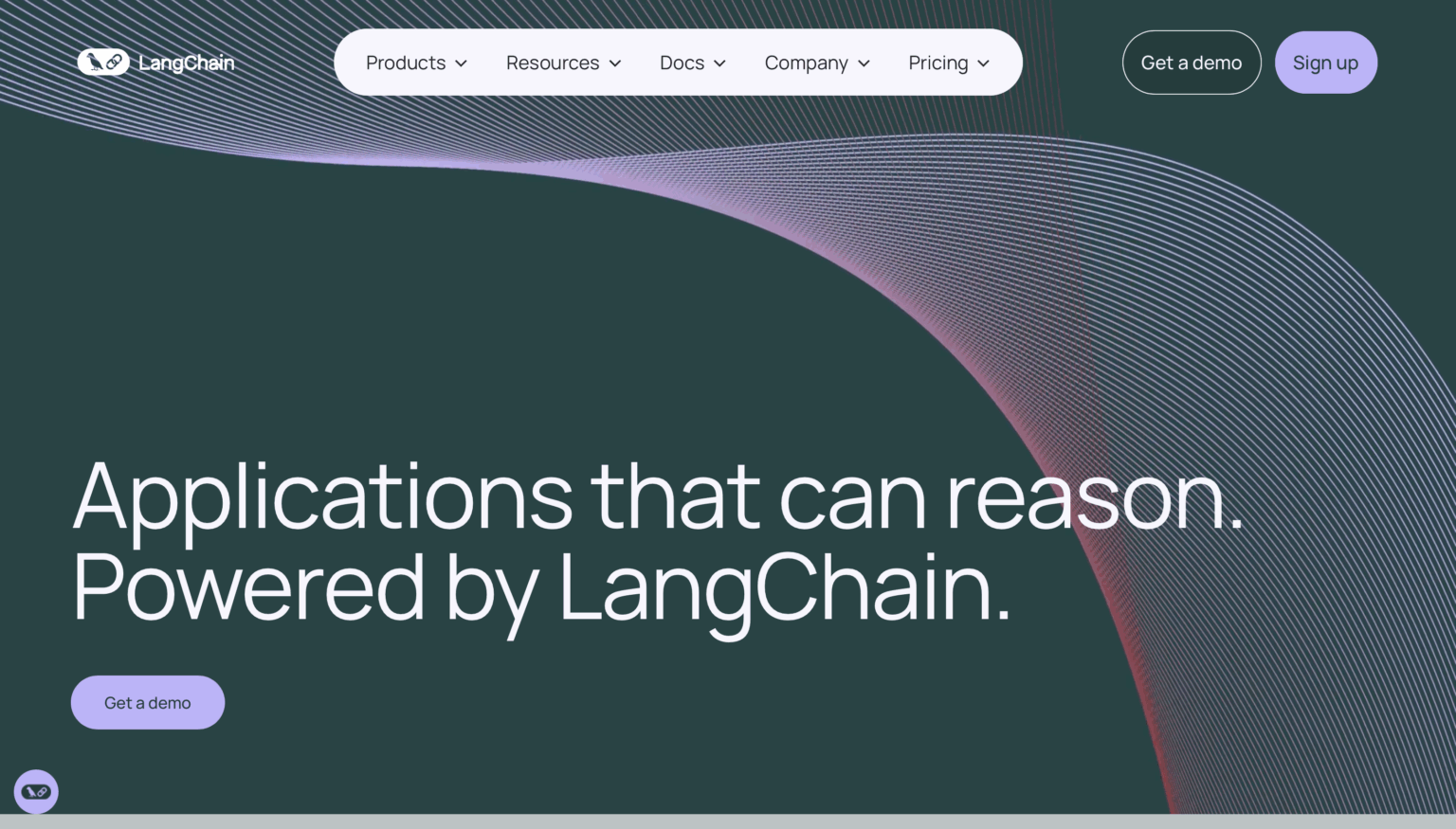Table of Contents[Hide][Show]
Large Language Models (LLMs) have made machine learning model management more difficult. Specifically, how can developers modify their MLOps strategies to effectively manage these complex models?
MLOps have simplified machine learning model deployment and maintenance.
As AI has grown, the appearance of Large Language Models (LLMs) required a more specialized method, which led to the creation of Large Language Model Operations (LLMOps).
LLMOps deals with the special problems that LLMs bring up, like handling big datasets and complicated structures. MLOps is more focused on regular ML models.
For example, MLOps could use a model for predictive analytics, while LLMOps would be better for delivering models like GPT-4 that create text that sounds like it was written by a person.
This technical guide looks at the differences between LLMOps and MLOps, showing the difficulties they come with and the best ways to handle AI models.
Understanding MLOps
Machine Learning Operations (MLOps) simplifies the deployment and administration of ML models in production by fusing DevOps techniques with machine learning.
This approach ensures that models are dependable, reproducible, and maintainable. Companies using MLOps can automate model retraining and deployment, eliminating human mistakes and improving time-to-market.
Organizations can effectively scale their AI initiatives while maintaining high-quality standards by including MLOps.
Core Workflow Components
Data Versioning & Governance:
Continuously monitors and manages data versions to ensure that models are trained on precise datasets. This approach provides compliance with data rules and repeatability.
Experimentation & Model Versioning:
Enables the monitoring of various model iterations and their performance metrics. This allows data scientists to compare experiments and identify the most effective models for deployment.
CI/CD in Machine Learning:
Develop pipelines for Continuous Integration and Continuous Deployment that are specifically designed for machine learning workflows. This automation ensures that modifications to data or code are rigorously tested and implemented, thereby increasing the reliability of the system.
Deployment & Monitoring:
Focuses on the continuous monitoring of the performance of models and their deployment into production environments. This ensures that models function as intended and enables the immediate identification of issues such as model drift.
Scalability and Resource Optimization:
Optimizes computational resources while ensuring that ML models can scale efficiently to handle increased tasks. This balance is very important for keeping up success without spending too much money.

Architectural Components & Tools
The implementation of MLOps requires the use of several kinds of architectural components and tools that are intended to improve the various phases of the ML lifecycle:
Containerization:
- Docker: It lets you put programs and the libraries they need into movable containers, which makes sure that everything is the same in both development and production environments.
- Kubernetes: A dependable platform for the execution of machine learning algorithms, orchestrates the deployment, scaling, and administration of containerized applications.
CI/CD Integration Tools:
- GitHub Actions: Allows the testing and deployment of machine learning models in response to code changes by automating workflows directly within GitHub.
- Jenkins: ML pipeline-adaptable open-source automation server supporting project creation, deployment, and automation.
- GitLab CI: Enables the seamless automation of the ML model lifecycle by providing continuous integration and deployment capabilities.Wikipedia:
Popular Frameworks:
- MLFlow: It provides tools for the management of model deployment, the packaging of code into reproducible trials, and the monitoring of experiments.
- Kubeflow: It is a software solution that is intended to help with the deployment of scalable and portable ML workloads on Kubernetes.
- TensorFlow Extended (TFX): It is a platform that enables the deployment of production machine learning pipelines, assuring that the components are standardized and can be reused.
Challenges & Limitations in MLOps
MLOps makes it easier to install and control machine learning models, but there are still some problems to solve:
- Scalability Issues with Large Datasets/Models: Managing huge numbers and complicated models can put a strain on infrastructure, which can cause delays and resources to be used up faster. To solve these problems, we need data systems that work well and distributed computers.
- Model Drift Detection and Mitigation: Changes in the fundamental data patterns may result in a decrease in the accuracy of models over time. To keep models useful, it is important to use methods like constant monitoring and automatic retraining.
- Manual Intervention in Complex Models: Manual adjustment and supervision is necessary for certain models, which can be resource-intensive and susceptible to human error. Creating strong automated tools and procedures helps lower the need for human involvement.
Organizations must address these difficulties to properly benefit from MLOps and maintain their ML projects.
Understanding LLMOps
Large Language Model Operations (LLMOps) are a specialized subset of Machine Learning Operations (MLOps) that are intended to oversee the lifecycle of large language models (LLMs) like GPT-4, Gemini, and LLaMA.
The need for specialized operational practices has become increasingly apparent as generative AI models have progressed at a rapid pace. LLMOps solve problems particular to LLMs including their large scale, complex designs, and particular deployment needs.
Companies can use LLMOps to make sure that these models work well with applications, are well taken care of, and always give good performance.
Exploiting LLMs’ potential in content generation, language translation, and conversational AI requires this technique. Building strong LLMOp practices is important for keeping AI-driven projects innovative and running smoothly as the use of LLMs grows.
Technical Differentiators of LLMOps
LLMOps differ from conventional MLOps in several ways:
- Managing Large-Scale Data and Compute Resources: LLMs require the management of substantial computational capacity and extensive datasets. These models require efficient data pipelines and scalable infrastructure to train and deploy.
- Fine-Tuning and Prompt Engineering: Fine-tuning with domain-specific data and developing effective prompts are necessary for adapting pre-trained LLMs to specific tasks. These methods improve how well models work and how relevant they are to specific uses.
- Real-Time Inference Challenges: Low-latency responses and high throughput are necessary for the deployment of LLMs in real-time applications. To satisfy these performance specifications, it is imperative to optimize infrastructure and inference processes.
- Cost Optimization with GPU Resource Management: The computational intensity of LLMs makes it imperative to limit operating expenses through appropriate GPU resource management. Strategies include allocating resources in a dynamic way and using tech solutions that are low in cost.
Specialized Architectural Components for LLMOps
Implementing LLMOps efficiently requires the use of specialized frameworks and tools:
- Foundation Model Repositories and Management: Platforms such as Hugging Face offer repositories for the access, sharing, and management of pre-trained LLMs, which allow model reuse and collaboration.
- Advanced Serving Tools Optimized for LLMs: Tools like Ray Serve and NVIDIA Triton Inference Server have been designed to ensure the efficient deployment and serving of LLMs, which ensures the responsiveness and scalability of AI applications.
- Distributed Training and Fine-Tuning Architectures: Distributed training and fine-tuning of LLMs across multiple GPUs or nodes are facilitated by frameworks such as DeepSpeed, Megatron-LM, and Horovod, which enhance scalability and reduce training time.
These components can be used to create powerful LLMOps pipelines that meet the special issues of deploying and maintaining large language models in production environments.
LLMOps vs. MLOps (Technical Perspective)
Data Management & Governance
MLOps and LLMOps require effective data management. They both want to make sure that data is correct and reliable, but the models they back make their methods different. Model Lifecycle & Versioning
| Aspect | MLOps | LLMOps |
| Data Ingestion | Traditional ETL (Extract, Transform, Load) systems are used to handle both ordered and unstructured data. | Advanced parallelized data input and editing methods are used to deal with huge amounts of unstructured text data. |
| Data Structure | Focuses on the formats of structured and semi-structured data. | Mostly works with huge amounts of text data that is not organized. |
In MLOps, organized data makes it easy to process using well-known ETL tools. On the other hand, LLMOps have to handle very large unorganized datasets, which need complex methods for importing and organizing data to keep it accurate and useful.
Model Lifecycle & Versioning
In MLOps and LLMOps, the management of model lifecycle and versioning presents unique challenges.
In traditional MLOps, models are made for specific tasks, which means that changes and improvements need to be carefully tracked through version control.
Performance metrics and business requirements are the basis for scheduling deployment and retraining.
On the other hand, LLMOps usually use models that have already been trained, focusing on fine-tuning and rapid engineering to make models fit different uses.
To successfully handle the base model and all of its many fine-tuned variations, this method needs a dynamic versioning system.
Deployment in LLMOps is more frequent, and retraining strategies prioritize continuous learning to accommodate changing language patterns and user interactions.
Deployment Strategies and Scaling
Scaling considerations and deployment strategies differ substantially between LLMOps and MLOps.
| Aspect | MLOps | LLMOps |
| Deployment Model | Microservice designs and server-based deployments are often used for flexibility and scalability. | Serverless architectures can be implemented to effectively manage the substantial computational requirements of large models. |
| Architecture | Supports microservices so that components can be scaled and maintained independently. | Uses monolithic architectures to optimize performance when it is necessary to integrate tightly coupled components. |
Microservice designs work well for MLOps because they let each part grow on its own based on demand. When working with models that need a lot of resources, LLMOps can choose serverless operations to make sure that resources are distributed flexibly and costs are kept low.
Monitoring and Maintenance
Monitor and maintain models in production to maximize performance. MLOps focuses on keeping track of measures like recall, accuracy, and precision, using drift detection techniques to find out when changes in input data cause a model’s performance to drop.
Scheduled retraining and revisions are involved in maintenance to resolve detected drifts.
However, due to the computational complexity of large language models, LLMOps also has to track other metrics like latency, throughput, and token efficiency.
Drift and bias identification in LLMOps need special methods to handle the details of how language changes over time and how it applies to the situation.
Prompt interventions are required to ensure the integrity and reliability of the model’s outputs, as continuous monitoring is required to identify issues such as model hallucinations or unanticipated biases.
Technical Workflow Differences: Step-by-Step Comparison
MLOps Workflow
The machine learning lifecycle is optimized by MLOps, which ensures the efficient development, deployment, and maintenance of models. The typical workflow comprises the following:
- Data Preparation: Gather and preprocess data to ensure consistency and quality.
- Experimentation: Evaluate a variety of algorithmic and model architectures to determine the most effective approach.
- Model Training: Use the prepared data to train the selected model, adjusting parameters to optimize performance.
- Validation: Assess the accuracy and generalization of the trained model by comparing it to a validation dataset.
- Integration: Implement the validated model in a production environment for practical applications.
- Monitoring: Consistently evaluate the model’s performance, identifying potential issues such as data drift or reduced accuracy.
- Retraining: The model is updated with new data as necessary to maintain or enhance performance.
Over time, this structured process ensures that machine learning models remain dependable and effective.
LLMOps Workflow
LLMOps is dedicated to the management of large language models (LLMs) and the resolution of their special needs. The workflow includes the following
- Pre-training: The LLM should be trained on a wide range of text datasets to develop an in-depth knowledge of language.
- Fine-tuning: Use targeted datasets to modify the pre-trained model to suit particular tasks or domains.
- Prompt Optimization: Optimize input prompts to ensure that the model’s responses are effectively guided toward the desired outputs.
- Deployment: Integrate the refined model into applications to ensure that it satisfies performance and scalability requirements.
- Real-time Inference: Enable the model’s ability to generate responses in real-time environments, while simultaneously balancing computational demands and efficiency.
- Continuous Feedback Loop: Gather user feedback and interactions to further refine prompts and fine-tune the model, which enhances its accuracy and relevance.
This method ensures that LLMs are effectively integrated and maintained in applications, resulting in consistent and high-quality results.
Conclusion
Managing AI models well requires knowing the differences between Machine Learning Operations (MLOps) and Large Language Model Operations (LLMOps).
MLOps is particularly concerned with the efficient operation of a variety of machine learning models in production environments by streamlining their deployment and maintenance.
On the other hand, LLMOps targets the unique challenges that are linked to large language models, including the management of substantial computational resources and the handling of immense unstructured datasets.
Organizations can implement operational strategies that correspond with their technical requirements by acknowledging these distinctions.
The performance and scalability of AI applications are made more effective by implementing the appropriate practices for each model type.





Leave a Reply